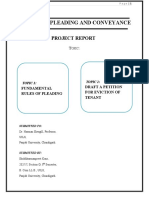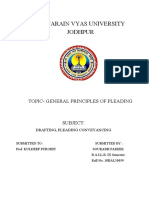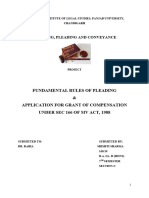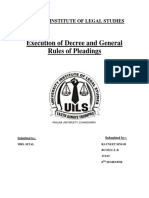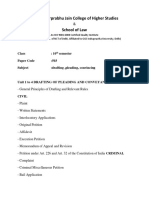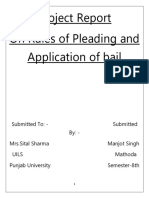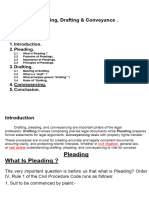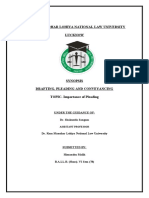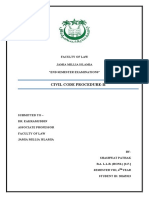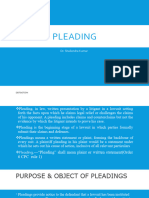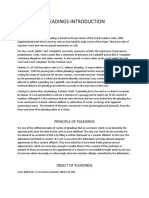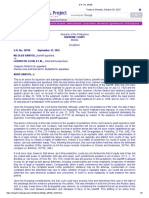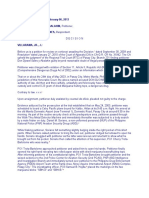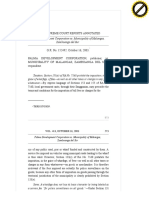0% found this document useful (0 votes)
24 views8 pagesDPC Assignment
The document discusses the critical role of pleadings in ensuring access to justice within the Indian legal system, emphasizing their importance in presenting clear and structured arguments in civil litigation. It outlines the procedural requirements under the Code of Civil Procedure, 1908, and highlights judicial observations that reinforce the necessity of precise pleadings for fair adjudication. Ultimately, the author argues that well-drafted pleadings are essential for maintaining judicial efficiency and safeguarding the right to a fair hearing.
Uploaded by
ritik.kanoujiaCopyright
© © All Rights Reserved
We take content rights seriously. If you suspect this is your content, claim it here.
Available Formats
Download as DOCX, PDF, TXT or read online on Scribd
0% found this document useful (0 votes)
24 views8 pagesDPC Assignment
The document discusses the critical role of pleadings in ensuring access to justice within the Indian legal system, emphasizing their importance in presenting clear and structured arguments in civil litigation. It outlines the procedural requirements under the Code of Civil Procedure, 1908, and highlights judicial observations that reinforce the necessity of precise pleadings for fair adjudication. Ultimately, the author argues that well-drafted pleadings are essential for maintaining judicial efficiency and safeguarding the right to a fair hearing.
Uploaded by
ritik.kanoujiaCopyright
© © All Rights Reserved
We take content rights seriously. If you suspect this is your content, claim it here.
Available Formats
Download as DOCX, PDF, TXT or read online on Scribd
/ 8

